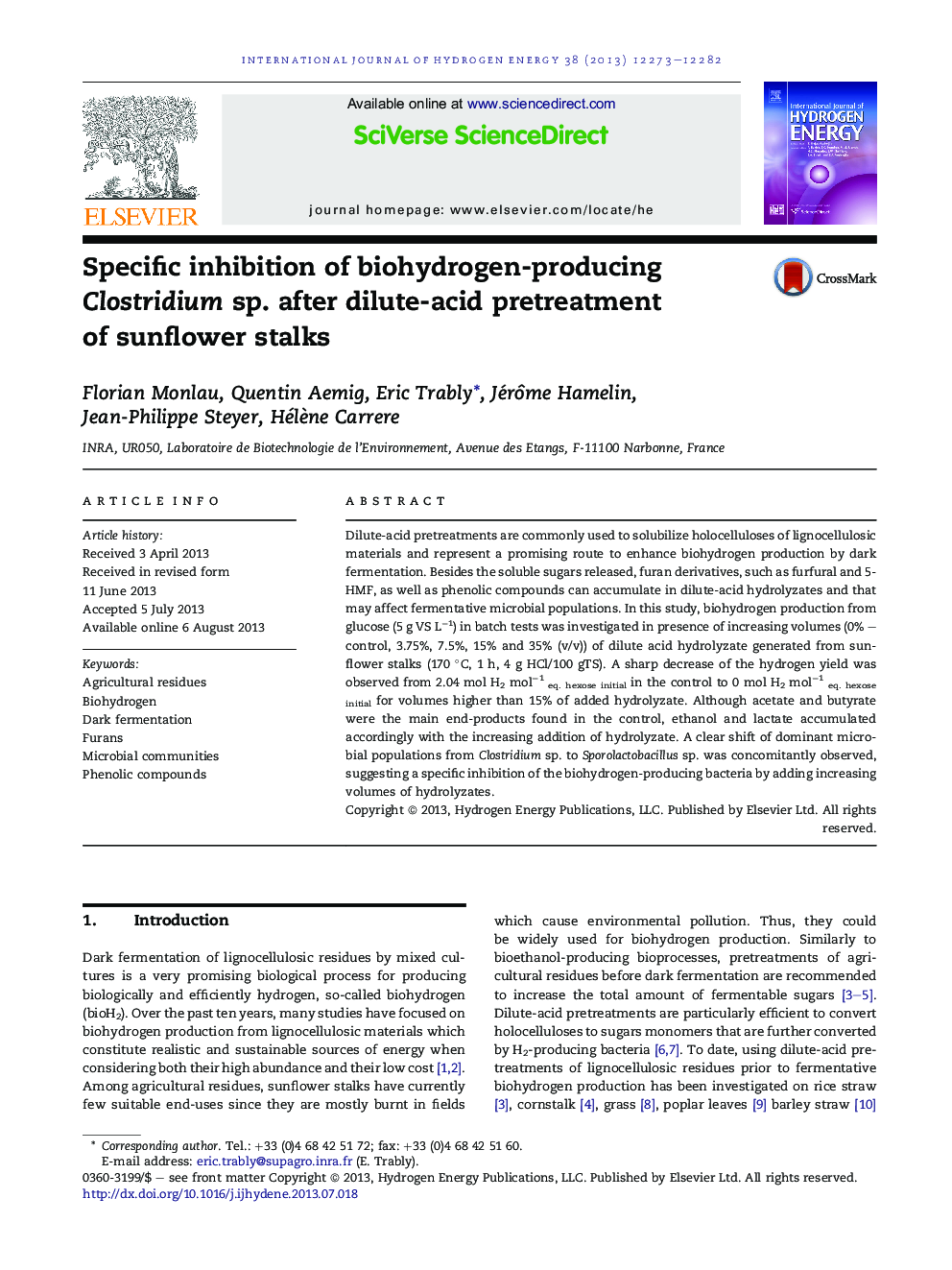| Article ID | Journal | Published Year | Pages | File Type |
|---|---|---|---|---|
| 1281456 | International Journal of Hydrogen Energy | 2013 | 10 Pages |
•Biohydrogen-producing bacteria were specifically inhibited by dilute-acid hydrolyzate.•Shift from Clostridium sp. to Sporolactobacillus sp. in presence of hydrolyzate.•A gradual metabolic shift from acetate/butyrate to ethanol/lactate was observed.
Dilute-acid pretreatments are commonly used to solubilize holocelluloses of lignocellulosic materials and represent a promising route to enhance biohydrogen production by dark fermentation. Besides the soluble sugars released, furan derivatives, such as furfural and 5-HMF, as well as phenolic compounds can accumulate in dilute-acid hydrolyzates and that may affect fermentative microbial populations. In this study, biohydrogen production from glucose (5 g VS L−1) in batch tests was investigated in presence of increasing volumes (0% – control, 3.75%, 7.5%, 15% and 35% (v/v)) of dilute acid hydrolyzate generated from sunflower stalks (170 °C, 1 h, 4 g HCl/100 gTS). A sharp decrease of the hydrogen yield was observed from 2.04 mol H2 mol−1eq. hexose initial in the control to 0 mol H2 mol−1eq. hexose initial for volumes higher than 15% of added hydrolyzate. Although acetate and butyrate were the main end-products found in the control, ethanol and lactate accumulated accordingly with the increasing addition of hydrolyzate. A clear shift of dominant microbial populations from Clostridium sp. to Sporolactobacillus sp. was concomitantly observed, suggesting a specific inhibition of the biohydrogen-producing bacteria by adding increasing volumes of hydrolyzates.
